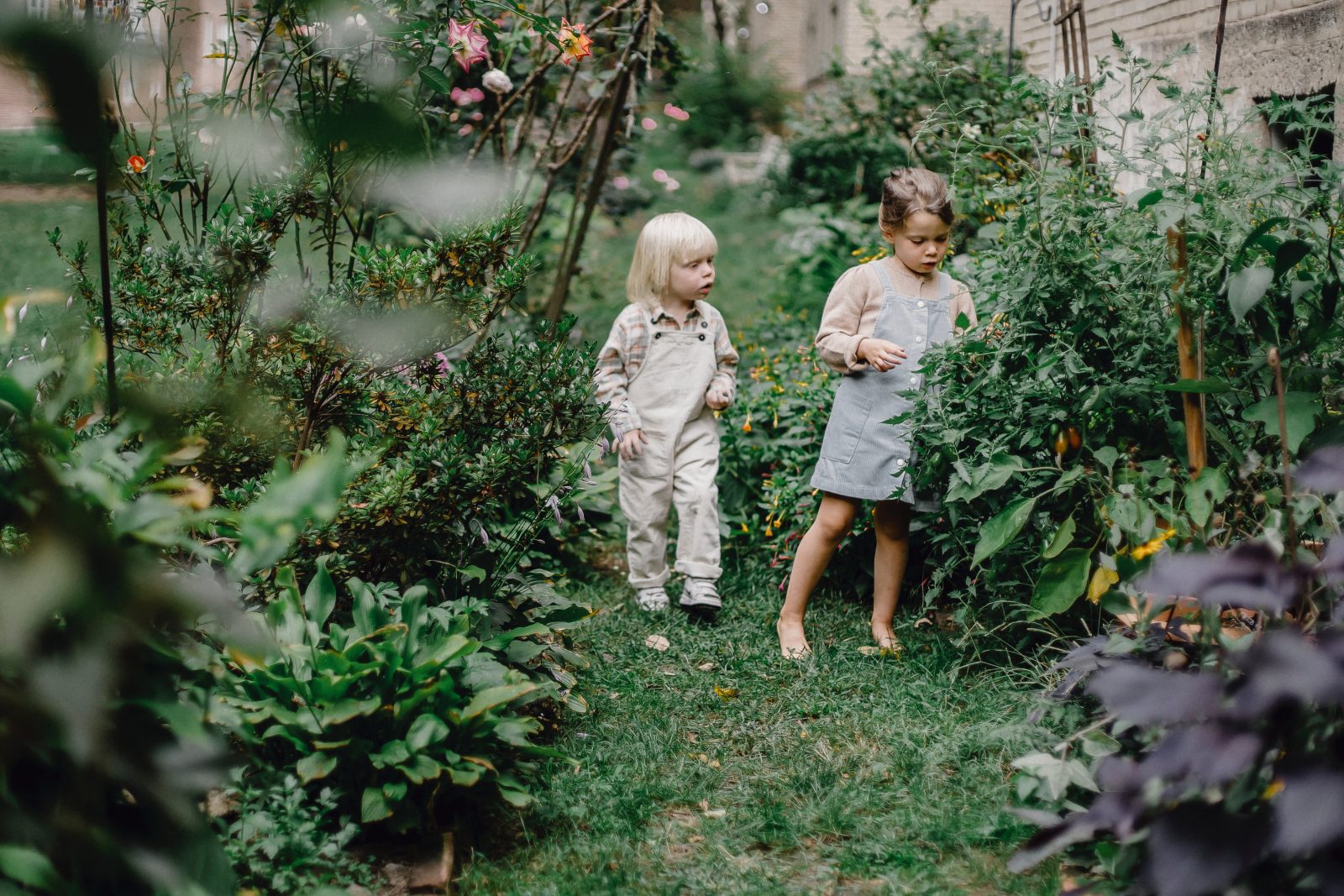Creating A Kid-Friendly Garden

By Eve Nicholas
But to most parents, dirt is the enemy. Your daily routine overflows with cleaning, scrubbing and putting things in order while your kids dig up another earthworm and lay it down flat on your nice, tidy floor.
Here’s the thing. You have the ability to turn your kids’ love of dirt into passion for the planet. And for those of you who feel too overwhelmed to worry about the future of planet Earth, you can still transform their delight in all-things-muddy into an enjoyable and healthy experience for your family.
Forget about mucky footprints and smudged faces for a moment. Instead, think about the ways that soil, plants and bugs can educate and inspire your kids, right in your own backyard.
GROWING FOOD, CULTIVATING HAPPINESS.
When children discover seedlings poking through the soil, their eyes widen. It’s a miracle, really. Not the part about the seeds. The miracle is that kids genuinely adore nature so much that they can’t help but learn from it.
Gardening provides children with an opportunity to explore the dirt, learn from it and watch things grow. There is mystery in gardening, and it also inspires patience, gratitude and even confidence for those who learn to cultivate plants and eat the rewards.
Quite simply, gardening is good for their education, good for their imagination and good for the environment. But there’s a little something in it for you, too. Find a little patch of ground (or a big flower pot), some basic tools and a handful of seeds. That’s all it takes to give your kids the dirt they crave while increasing your family time and ending up with a few delicious meals in the process.
SOWING YOUR KID-FRIENDLY GARDEN.
In one quick trip to the garden center, pick up a few bags of compost, a shovel and spade, garden gloves for you and the kids, and some vegetable seeds or plants. If this is your first garden, focus on the basics. Don’t get distracted by all of the other tools and gadgets that you can buy, just
remember to grab some safe, kid-sized tools that match your own.
When it comes to plants, consider tomatoes, lettuce and herbs. Peppers grow very well in hot climates. Swiss chard sprouts quickly from seed and comes in lots of bright colors, so even if you don’t eat every leaf, you’ll certainly enjoy the display!
When you get home, use the spade or shovel to soften and prepare the soil in a sunny spot. Mix in the compost and leave the garden alone for a day before adding seeds or plants.
It’s a good idea to separate your new garden area into two sections, one for you and one for the kids. Depending on their ages, they’ll either need a corner for playing in the mud, or a row of veggies to plant, water and weed.
NURTURING A GREEN THUMB.
Even if you don’t think you have a “green thumb,” caring for a small vegetable garden requires little more than a watering can and a watchful eye. Keep seeds and seedlings moist but not soaking wet. For plants, add water when the top half-inch of soil feels dry to the touch.
Watch out for wilting, yellow leaves and other signs of trouble. If you see something that concerns you, look it up on the Internet or ask the folks at the garden center for help. For a safe and healthy garden for you and the kids, always seek out organic or chemical-free solutions to problems that arise.
WELCOMING BUGS AND CRITTERS (SOME OF THEM).
Bugs and creatures have sustained us (and the planet) for longer than we can imagine. When it comes to your garden, some critters will enhance its richness and vitality, while others devour every leaf if given the chance.
To learn about creepy-crawlies, poke around at the library or online. Better yet, have the kids do some research and draw up a chart that separates the beneficial critters from the destructive ones.
The good list includes earthworms, ladybugs, praying mantis and lacewings. Beware of slugs (they chew), aphids (they slurp) and certain kinds of beetles (they chomp). In some landscapes, mice, rats and squirrels trigger heartbreak. Check your plants often for signs of intruders and respond quickly!
HARVESTINGVEGETABLES & SMILES.
Too many parents dismiss the idea of gardening as a family. They believe that time is too short and dirt is too plenty. If you consider the countless benefits of a little family mud-time — and the fact that gardening doesn’t have to be a major production — perhaps you’ll change your mind.
Even the tiniest backyard lettuce patch will teach your children about the magic of the ecosystem. It will also increase the quality time that you have with your family, and if you do it right, everyone will munch on some homegrown veggies this summer!
Oh, and it might even teach you a thing or two about the joy of dirt. Now that would be a miracle.









